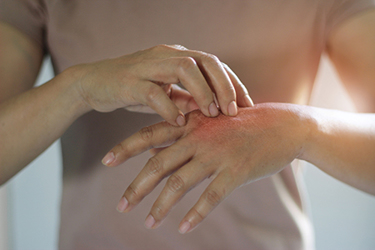Evolution Of Treatment Of Atopic Dermatitis
By Jasmina Jankicevic

Atopic dermatitis (AD), often called eczema, is a complex disorder involving skin barrier function abnormalities and skin inflammation. It is the most common skin condition in children under the age of 11 years – about 50 percent of patients develop the disease by the age of one year and up to 85 percent by the age of five. Atopic dermatitis affects up to 20 percent of children and three percent of adults worldwide, and prevalence appears to be increasing.
With its chronic, cyclical, and pruritic course, AD exacts a significant physical, psychological, social, and financial toll on those afflicted and their families. AD is often the first step in what is referred to as the atopic march – the natural history of allergic diseases as they develop throughout infancy and childhood. Classically, the atopic march begins with AD and progresses to immunoglobulin E (IgE)-mediated food allergy, allergic rhinitis, and asthma.
Approximately 80 percent of children with AD develop asthma or allergic rhinitis later in childhood, and the severity of these conditions appears to correlate with the severity of the skin disease.
This white paper will explore the pathophysiology of atopic dermatitis, as well as the rationale and mechanisms of action of existing and emerging therapies for AD.
Get unlimited access to:
Enter your credentials below to log in. Not yet a member of Clinical Leader? Subscribe today.
